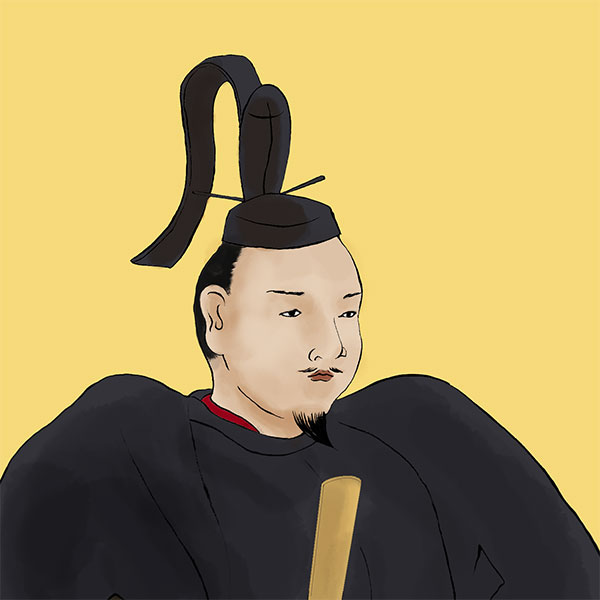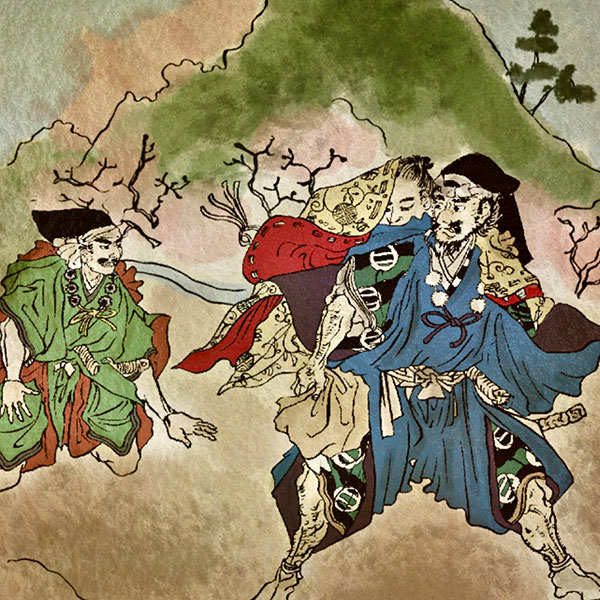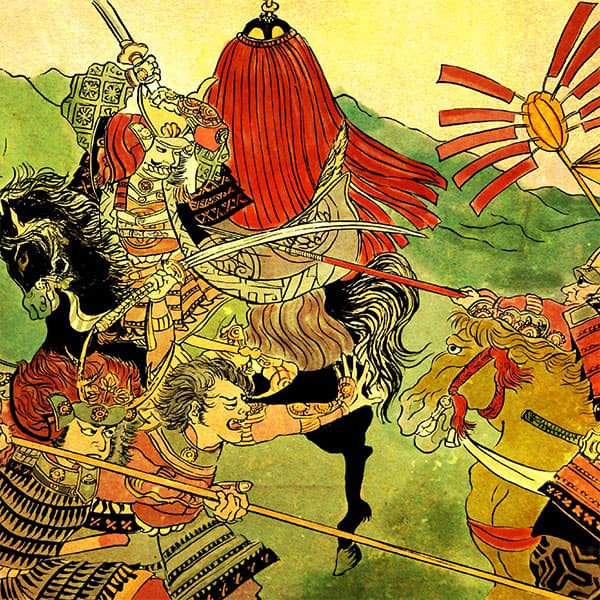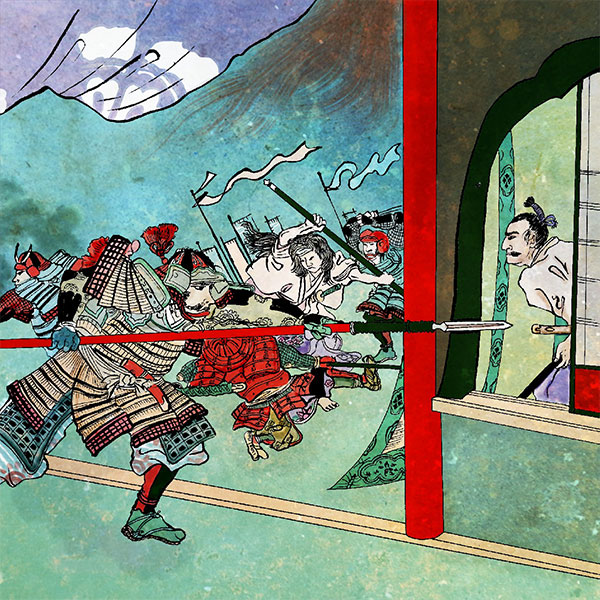Yoshiaki Ashikaga (1/2)The last general of the Muromachi shogunate

Yoshiaki Ashikaga
- Article category
- biography
- name
- Yoshiaki Ashikaga (1537-1597)
- place of birth
- Kyoto
- Related castles, temples and shrines

Nijo Castle
- related incident
After the Onin War, the Muromachi shogunate's centripetal force further weakened, and powerful warlords rose to prominence across Japan. The military commanders who unified each region became Sengoku daimyo and aimed to move to Kyoto in order to conquer the country. Meanwhile, Yoshiaki Ashikaga, the last general of the Muromachi shogunate, tries to avoid being killed and moves from place to place to seek help from the feudal lords of the Sengoku period. This article introduces the life of Yoshiaki Ashikaga, who ran away, wandered, and after being exiled, wandered from place to place.
From birth to ordination
He was born in Kyoto on November 13, 1537, as the second son of Yoshiharu Ashikaga, the 12th shogun. His mother is Keijuin, the daughter of Naomichi Konoe. His childhood name was Chitosemaru.
In July 1540, when Chitosemaru was three years old, his father, Yoshiharu, made a contract to have him admitted to Kofukuji Ichijoin in Yamato Province (present-day Nara Prefecture). He already had an older brother, Yoshiteru (later the 13th shogun), who was his heir, and in order to avoid conflicts over his successor, he followed the Ashikaga shogunate's custom of having sons other than the heir enter the priesthood. In addition, since Kofuku-ji Temple was the lord of Yamato (also the guardian of Yamato), young shoguns joined the temple in order to strengthen relations with temples and shrines, and in the future Kofuku-ji Temple and other areas were It seems that the temples and shrines of Yamato tried to establish a system to support the shogun family.
On September 11, 1542, when Chitosemaru was 6 years old, Suwa Nagatoshi, a temple magistrate, headed to Kofuku-ji Temple as a messenger from Yoshiharu. He will be joining us as a disciple, so please take good care of him.''
On November 20th, Chitosemaru became the adopted son of his uncle Konoe Konoe, entered the Ichijo-in Temple of Kofukuji Temple, and took the Buddhist name Kakukei. As a member of the Konoe family, Kakukei trains to succeed the Ichijoin Monzeki.
After that, he became a monzeki of Ichijo-in Temple and rose to the rank of Gonjo Sozu, and spent more than 20 years at Kofuku-ji Temple without incident. If nothing had happened, Kakukei would eventually become the head priest of Kofukuji Temple and end his life as a high priest.
From the Eiroku Incident to life in Omi
On May 19, 1565, Yoshiteru, the older brother of the 13th Shogun, was murdered in Kyoto by Yoshitsugu Miyoshi, the Miyoshi Sanninshu, Dori Matsunaga, and others (the Eiroku Incident). At this time, his mother Keijuin and his younger brother Shuko, the head of Rokuonin Temple, were also killed.
After Yoshiteru's death, Kakukei was imprisoned and monitored at Kofukuji Temple by Hisashi Matsunaga and others. Since Kakukei was the younger brother of the 13th shogun and had been promised the post of Betto of Kofuku-ji Temple in the future, Hisahide and his colleagues seem to have imprisoned him, fearing that by killing Kakukei he would turn Kofuku-ji Temple into an enemy.
Even though I was actually supervised, I was not allowed to go out and was free to act.
Eventually, Yoshikage Asakura of Echizen tried to negotiate with Miyoshi and Matsunaga through "direct talks" in order to have Kakukei escape from Kofukuji Temple, but the negotiations ended in failure and he decided to use a trick to escape. became. On the night of July 28, Kakukei secretly escaped from Kofuku-ji Temple with the guidance of his older brother's retainers. Fujitaka Hosokawa and Fujinaga Isshiki, who were Yoshiteru's close retainers, played an active role in the escape.
It is said that under Fujitaka's plan, Yoshimasa Yoneda used his medical skills to go in and out of Ichijo-in, get close to Kakukei, offer alcohol to the guard, get him sober, and succeed in escaping.
Kakukei and his group went up the Kizugawa River from Nara and arrived at Wada in Omi-Koka District the next day. He then entered Wada Castle, the residence of Koremasa Wada, a powerful clan in Wada, and took shelter here for the time being.
It was here that Kakukei declared that he would become the head of the Ashikaga shogun family, and sent letters of approval to feudal lords from all over the country. Kakuyoshi's son-in-law, Yoshimune Takeda of Wakasa, Takanari Kyogoku of Omi, and Yoshihiro Niki of Iga, responded to this call, as well as the shogunate retainers Isshiki Fujinaga, Fujihide Mibuchi, Harutada Odate, Hidemasa Ueno, and Nobutada Ueno. , Soga Suketori and others will be attending.
On November 21, with the kindness of Yoshikata Rokkaku of Omi, he moved from Wada, Koga District to Yajima Village, Yasu District (Yajima Town, Moriyama City), near Kyoto, and made it his residence (Yajima Palace). At that time, in Kyoto, the Miyoshi clan, including Yoshitsugu Miyoshi, was trying to appoint Yoshiaki's cousin, Yoshihide Ashikaga, as shogun, but internal divisions occurred due to a feud between Hisashi Matsunaga and the Miyoshi Sannin, and they used this as an opportunity to move to Kyoto. That's what I understood.
On February 17, 1566, Kakukei returned to secular life at the Yajima Imperial Palace and took the name Yoshiaki.
At the Yajima Palace, Yoshiaki kept in close contact with Yoshikata Rokkaku of Omi, Takamasa Hatakeyama of Kawachi, Terutora Uesugi of Echigo, and Yoshitsuna Hatakeyama of Noto, and was constantly on the lookout for an opportunity to come to Kyoto.
Yoshiaki's plan was to reconcile the mutually hostile Saito and Oda clans, Rokkaku and Asai clans, as well as the Takeda, Uesugi, and Gohojo clans, and aim to move to Kyoto with their cooperation.
Eventually, Rokkaku Yoshikata and Yoshiharu father and son from Omi began to show signs of rebellion against Yoshiaki, and as Omi became unrest, they had no choice but to retreat.
Life in Wakasa/Echizen
Yoshiaki relied on his sister-in-law, Yoshimune Takeda, and moved to Wakasa Province. It is said that at this time, Yoshiaki only had four or five followers with him.
After that, Yoshiaki moved from Wakasa to Tsuruga, Echizen Province, and then Asakura Keikage went there as a messenger, and Yoshiaki was welcomed to Ichijodani where Asakura Yoshikage was.
On February 8, 1568, Yoshiaki's rival, Yoshihide Ashikaga, received the proclamation of shogun while staying at Fumonji Temple in Settsu. Although Yoshiaki is in a more favorable position as a candidate for the next shogun than his rival Yoshihide due to his lineage and control over the magistrates who run the shogunate's affairs, he is unable to go to Kyoto forever, while the Miyoshi Sanninshu, who were the de facto rulers of Kyoto, This was also the result of continued efforts by Yoshihide, who was supported by Yoshiteru, to persuade the Imperial Court and the remaining shogunate retainers in Kyoto, such as promising to revive the Ise clan, a former government office butler that had been destroyed by Yoshiteru.
Yoshiaki believed that the character ``autumn'' was unlucky, so he invited the former Kanpaku Haruyoshi Nijo from Kyoto to Echizen, held a Genpuku ceremony at the Asakura clan's mansion in Ichijodani, and changed his name to Yoshiaki.
I finally got to Kyoto and calmed down on the plane.
While Yoshiaki was staying in Echizen, Oda Nobunaga did not forget about Yoshiaki's request to go to Kyoto, and in order to fulfill that request, he connected with Hisashi Matsunaga in 1995 and also approached the Yamaoka clan of Omi and the Yagyu clan of Yamato. . In addition, Nobunaga gained an advantage in the battle in Mino, capturing Inabayama Castle, the residence of the Saito clan, in August 1997, and in the following year, 11 years later, he also captured Kita Ise, making steady preparations. I did.
Yoshiaki resumed negotiations with Nobunaga through the mediation of Akechi Mitsuhide, a vassal of the Asakura clan. On July 13, Eiroku 11, Yoshiaki departed from Ichijodani, received a reception from Nobunaga's ally Nagamasa Azai at Odari Castle on the 16th, and met Nobunaga at Risseiji Temple in Mino on the 25th.
On September 7th, Nobunaga led the armies of Owari, Mino, and Ise and departed from Gifu in Mino to Kyoto. He aligned himself with Yoshiaki and prepared to go to Kyoto before dispatching troops.
On September 22nd, Yoshiaki entered Kuwanoji Temple in Omi, where his father Yoshiharu had once established the shogunate.
On September 27th, information spread that the Gokinai, Awaji, Awa, and Sanuki armies on the Miyoshi side were encamped in Yamazaki, and when Nobunaga's vanguard was dispatched, the troops had already withdrawn, and Nobunaga sent his army to Kawachi. We proceeded and arrived at Yamazaki/Tenjin Baba. Yoshiaki also moved from Kiyomizu-dera to To-ji and entered Jakusho-in in Nishioka Hyuga.
After that, they steadily subdued the Kinai region and were able to reach Kyoto safely.
Appointment of shogun and restoration of the shogunate
Yoshiaki received the proclamation of Shogun from the Imperial Court and became the 15th Shogun of the Muromachi Shogunate.
Yoshiaki recognized Nobunaga as a person of greatest merit, praised him as ``the greatest warrior in the world,'' and allowed him to use the Ashikaga clan's family crest, the paulownia crest and two-hiki ryo. After consulting with the Shogunate, he rewarded Nobunaga by giving him the title of ``Muromachi-dono Onchichi.''
It is especially famous that Yoshiaki's handwritten letter to Nobunaga on October 24th was addressed as ``My father, Oda Danmasatada (Nobunaga)-dono.''
- related incident

- WriterTomoyo Hazuki(Writer)I have loved history and geography since my student days, and have enjoyed visiting historical sites, temples and shrines, and researching ancient documents. He is especially strong in medieval Japanese history and European history in world history, and has read a wide range of things, including primary sources and historical entertainment novels. There are so many favorite military commanders and castles that I can't name them, but I especially like Hisashi Matsunaga and Mitsuhide Akechi, and when it comes to castles, I like Hikone Castle and Fushimi Castle. Once you start talking about the lives of warlords and the history of castles, there's a side of you that can't stop talking about them.






